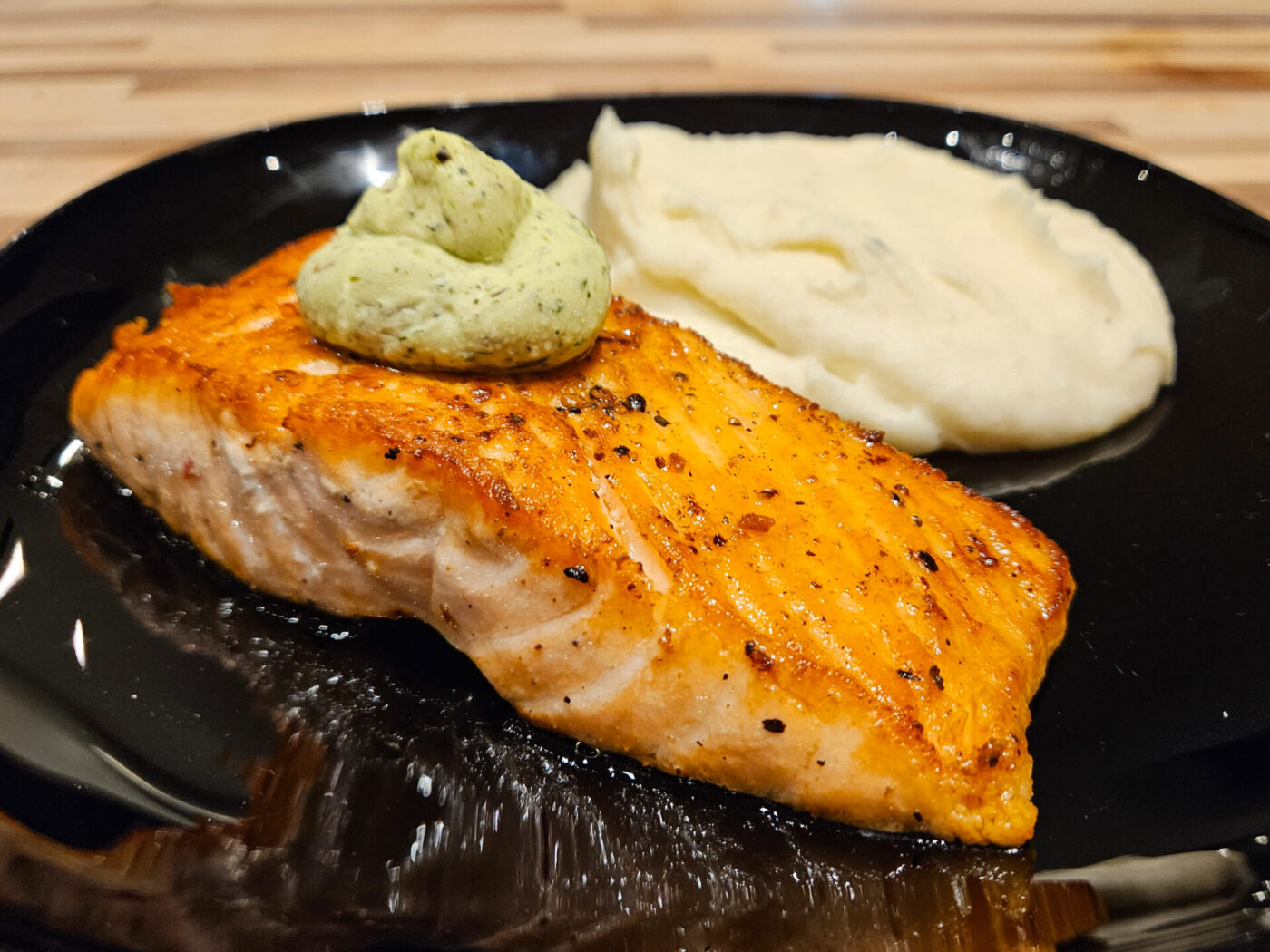Read More: Nutritional Information on Herb Butter
The Foundation: Butter’s Nutritional Profile
Since butter is the primary ingredient in herb butter, we must first understand its nutritional baseline. Butter is predominantly composed of fat, most of which is saturated fat. A typical tablespoon (about 14 grams) of unsalted butter contains approximately:
- Calories: 100
- Total Fat: 11-12 grams
- Saturated Fat: 7-8 grams
- Cholesterol: 30 milligrams
- Sodium: 0-2 milligrams (unsalted) or 90-100 milligrams (salted)
Butter also contains small amounts of fat-soluble vitamins:
- Vitamin A: Important for vision, immune function, and cell growth. Butter provides a decent amount of vitamin A, and it’s in a readily absorbable form (retinol).
- Vitamin D: Crucial for calcium absorption and bone health. Some butter may be fortified with vitamin D.
- Vitamin E: An antioxidant that helps protect cells from damage.
- Vitamin K2: Plays a role in blood clotting and bone health.
The specific amounts of these vitamins can vary depending on the quality of the butter and the cow’s diet (grass-fed butter tends to be higher in these nutrients).
The Herb Factor: Adding Flavor and (Potentially) Nutrients
The addition of herbs to butter introduces another layer of nutritional consideration. While herbs generally don’t contribute significant calories, fat, or macronutrients, they do offer a range of vitamins, minerals, and antioxidants. The specific nutritional benefits depend on the type and quantity of herbs used.
For example:
- Parsley: A good source of vitamins A, C, and K, as well as iron and folate.
- Chives: Contain vitamins A and C, as well as some potassium and folate.
- Dill: Provides vitamin A, vitamin C, manganese, and iron.
- Basil: A source of vitamin K, manganese, and antioxidants.
- Rosemary: Contains antioxidants and may have anti-inflammatory properties.
- Thyme: Contains vitamin C, vitamin A, iron, and manganese.
- Garlic (often added to herb butter): Contains allicin, a compound with potential antibacterial and antiviral properties.
While the amounts of these nutrients in a typical serving of herb butter are relatively small, they do contribute to the overall nutritional value, especially when fresh herbs are used generously. The herbs also add significant flavor, which can allow you to use less butter overall.
The Impact of Other Additions
Besides herbs, other ingredients are often added to herb butter, influencing its nutritional profile:
- Salt: Most herb butter recipes call for salt, which adds sodium. Using unsalted butter and controlling the amount of added salt allows you to manage the sodium content.
- Garlic: As mentioned above, garlic adds flavor and potential health benefits.
- Lemon Juice/Zest: Adds vitamin C and bright flavor.
- Other Spices: Black pepper, red pepper flakes, etc., can contribute trace amounts of minerals and antioxidants.
- Shallots/Onion: Adds flavor
Salted vs. Unsalted Butter Base
The choice between salted and unsalted butter as the base for your herb butter significantly impacts the sodium content. Unsalted butter contains virtually no sodium, while salted butter can add around 90-100 milligrams of sodium per tablespoon. If you’re watching your sodium intake, starting with unsalted butter and adding salt to taste is the best approach.
Grass-Fed vs. Conventional Butter
The nutritional quality of the butter itself can also make a difference. Grass-fed butter, made from the milk of cows that graze on pasture, tends to have a more favorable fatty acid profile than conventional butter (from grain-fed cows). It often contains:
- Higher levels of omega-3 fatty acids: These are anti-inflammatory fats that are beneficial for heart health.
- More conjugated linoleic acid (CLA): A type of fat that has been linked to potential health benefits, including improved body composition and reduced risk of certain diseases.
- Higher levels of fat-soluble vitamins: Particularly vitamins A, E, and K2.
Herb Butter in a Balanced Diet
Herb butter, while delicious and flavorful, is still a high-fat, high-calorie food. It should be consumed in moderation as part of a balanced diet that emphasizes whole foods, fruits, vegetables, lean protein, and whole grains.
The key is to view herb butter as a condiment, not a primary food source. A small amount can add significant flavor and enjoyment to a meal without dramatically increasing the overall calorie and saturated fat intake.
Potential Health Benefits (Indirect)
While herb butter itself isn’t a “health food,” it can indirectly contribute to a healthier diet:
- Enhanced Flavor: By adding a burst of flavor to vegetables, lean proteins, and whole grains, herb butter can make these healthy foods more appealing and encourage their consumption.
- Reduced Need for Less Healthy Condiments: A flavorful herb butter might replace less healthy options like creamy sauces or processed dressings.
- Increased Enjoyment of Meals: Making food more enjoyable can contribute to a more positive and sustainable approach to healthy eating.
The Bottom Line: Enjoy in Moderation, Choose Quality Ingredients
Herb butter offers a delicious way to enhance the flavor of your meals. Nutritionally, it’s primarily a source of fat (mostly saturated), with small amounts of fat-soluble vitamins and potential contributions from the added herbs and spices. Choosing high-quality, unsalted, grass-fed butter and fresh herbs will maximize its nutritional potential. As with all fats, moderation is key. Enjoy herb butter as a flavorful addition to a balanced and varied diet.


Share
Click on the icons below to share "Title of the item to share"